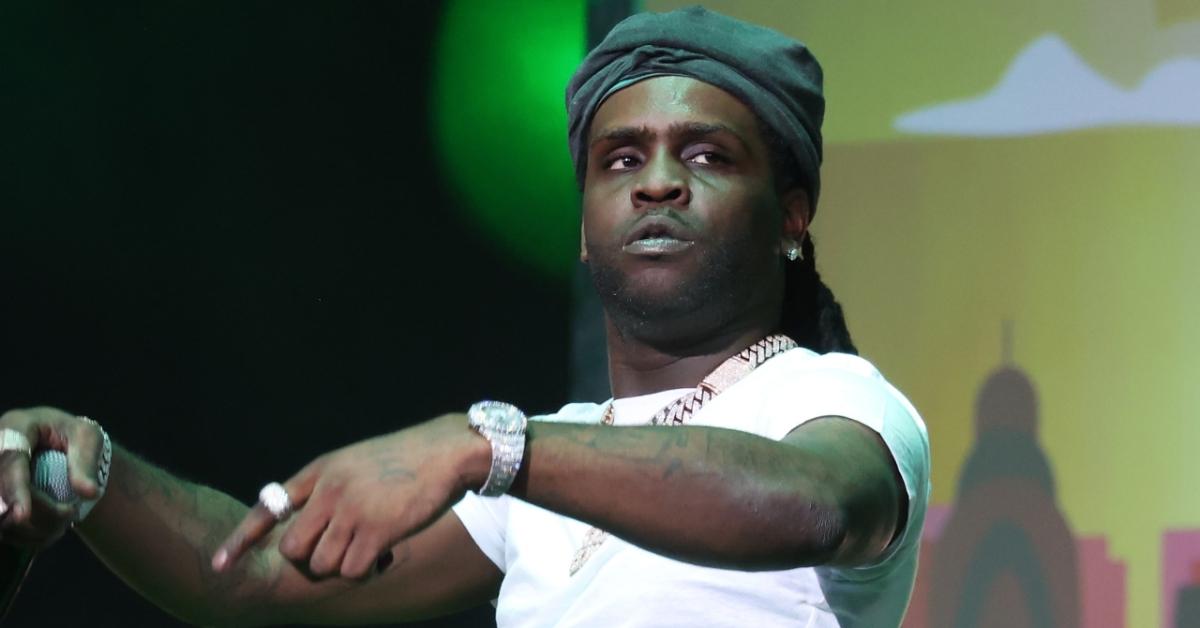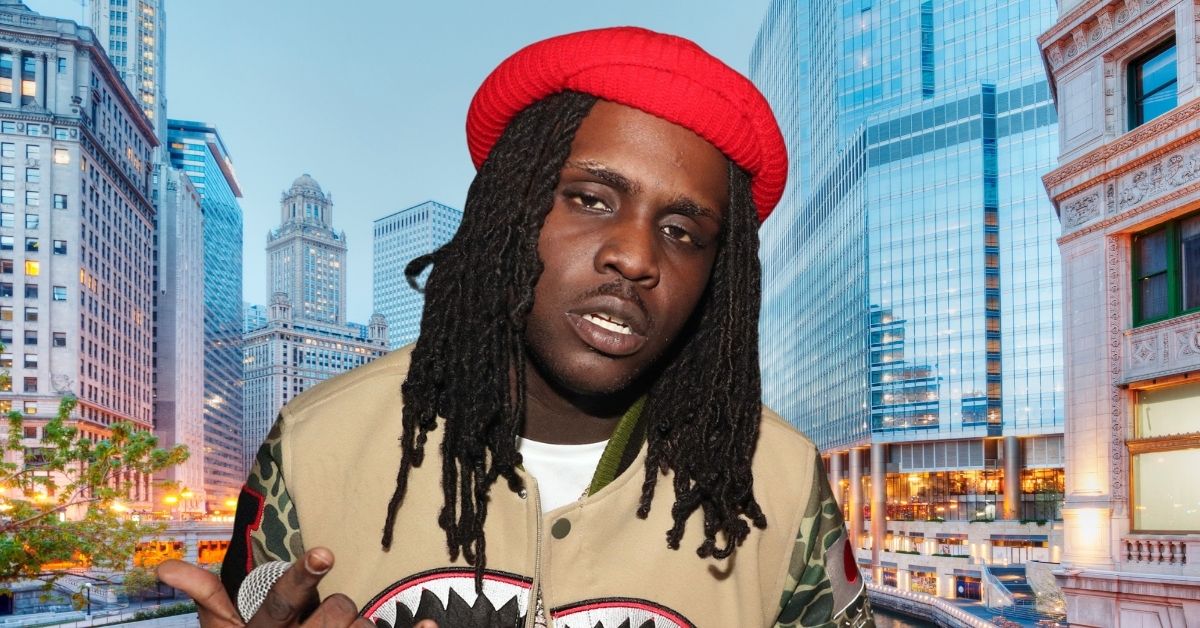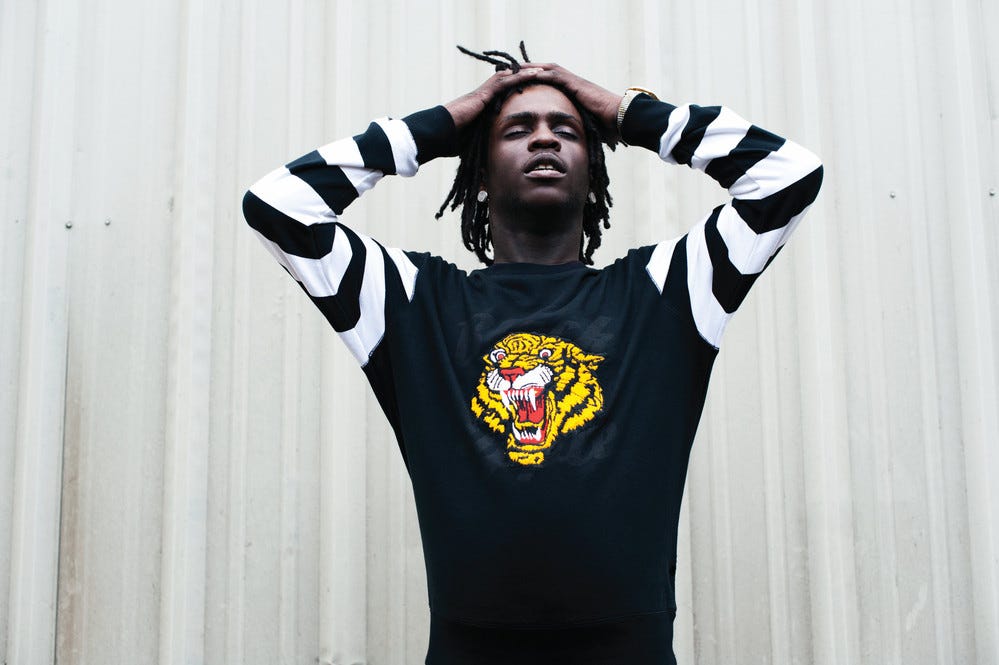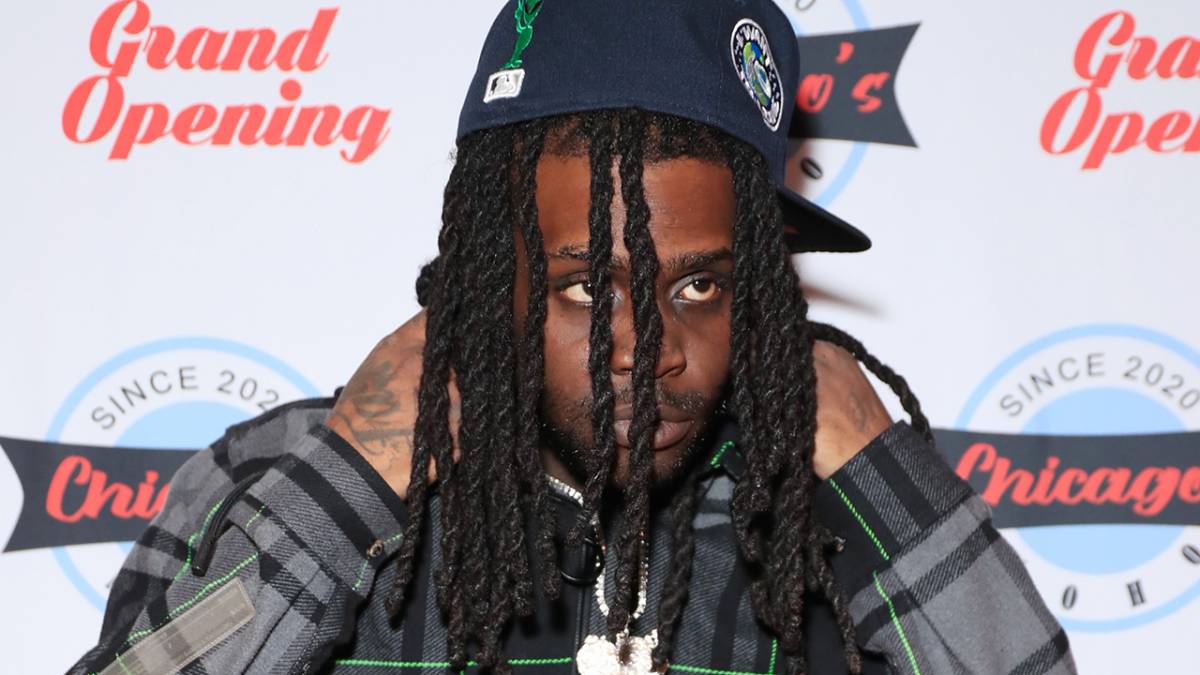SUMMARY:
- As of 2024, Keith Farrelle Cozart, better known as Chief Keef, has reached the age of 28 and boasts a net worth estimated at $1 million, reflecting his significant impact in the music industry, particularly within the drill genre that he helped popularize.
- Chief Keef’s financial journey showcases a blend of music sales, record deals, including a notable $6 million deal over three albums with Interscope, and his entrepreneurial ventures through his record label Glo Gang, contributing to his wealth amidst challenges and controversies.
- Despite varying estimates of his wealth over the years, with figures ranging up to $2.3 million, Chief Keef’s consistent musical output, combined with strategic business moves and digital ventures, underscores his evolving presence and financial acumen in the rap scene.
Keith Farrelle Cozart, widely known as Chief Keef, has undeniably left an indelible mark on the rap genre since his emergence in the early 2010s.
At the young age of 29, this Chicago-born rapper and record producer has not only pioneered the drill music scene but also amassed a significant fortune along the way. With a net worth estimated at $1 million in 2024, Chief Keef’s financial success mirrors his impactful career in the music industry.
Born on August 15, 1995, in a city known for its vibrant music scene as well as its challenges, Keef’s rise to fame was fueled by his raw talent and authentic storytelling. His breakthrough came with the hit single “I Don’t Like,” which caught the attention of music fans nationwide and led to a major label signing. Since then, Chief Keef has expanded his repertoire, dabbling in record production and launching his own label, Glo Gang.
His journey from the streets of Chicago to becoming a millionaire showcases not just his musical prowess but also his entrepreneurial spirit and business acumen.
Who Is Chief Keef?
Keith Farrelle Cozart, universally known as Chief Keef, stands as a significant figure in the music industry, particularly within the realms of rap and drill music.
Born on August 15, 1995, in Chicago, Illinois, Chief Keef’s journey from the streets of Chicago’s South Side to international fame is a testament to his talent, resilience, and influence as an artist.
Chief Keef burst onto the music scene in the early 2010s, quickly becoming the voice for Chicago’s most at-risk youth. His raw and unfiltered portrayal of life in Englewood, one of Chicago’s most violent neighborhoods, resonated with many. Through homemade YouTube videos and a strong word-of-mouth buzz in high schools, Keef’s music spread rapidly, capturing the attention of both fans and critics alike.
His debut album, Finally Rich, released in 2012, included hits like “I Don’t Like,” “Love Sosa,” and “Hate Bein’ Sober.”
These tracks not only solidified his position in the music world but also played a pivotal role in bringing Chicago’s drill music to a mainstream audience. Drill music, characterized by its grim lyrical content and trap-influenced beats, was a perfect medium for Chief Keef to express the realities of his upbringing and environment.
Beyond his music, Chief Keef’s influence extends to social media, where he boasts millions of followers, and into fashion and lifestyle, often setting trends followed by his fans. Despite facing legal issues and controversies, Chief Keef has managed to maintain a significant career, continuously releasing music and collaborating with other artists.
Chief Keef’s story is also deeply entwined with his personal life, particularly his early entrance into fatherhood and his relationships. He was born to Lolita Carter, who was just 15 years old at the time, highlighting the challenges he faced from a very young age.
His nickname “Sosa,” a nod to the character Alejandro Sosa from the film Scarface, reflects his self-identification with powerful figures overcoming adversity.
What Is Chief Keef’s Net Worth In 2024?
As of 2024, Chief Keef, a pivotal figure in the music industry known for his significant contributions to the drill and rap genres, has an estimated net worth of $1 million.
This valuation reflects not only his success as an artist but also his ventures beyond music, showcasing his multifaceted approach to building wealth.
Chief Keef, born Keith Farrelle Cozart, catapulted to fame with the release of hits like “I Don’t Like” and “Love Sosa.” These tracks not only became anthems of the drill music scene but also marked the beginning of a lucrative career that would extend beyond traditional music sales. His early entrance into the music industry, combined with his innovative approach to distribution and promotion, particularly through social media platforms, played a crucial role in his financial success.
Chief Keef’s wealth primarily stems from his music career, with revenue streams including album sales, digital streaming, and live performances. Since his debut, he has released multiple albums, mixtapes, and singles that have contributed significantly to his earnings.
His strategic use of platforms like YouTube and SoundCloud for releasing music and engaging with fans helped him build a loyal following, further boosting his revenue from music.
Life Before Fame: Chief Keef’s Early Years
The story of Chief Keef, born Keith Farrelle Cozart on August 15, 1995, is one marked by both adversity and early signs of remarkable talent.
Growing up in Chicago’s South Side, particularly around the neighborhood of 64th Street and King Drive, Chief Keef’s upbringing was set against a backdrop of challenges that would later influence his music and persona.
Chief Keef’s early life was deeply entrenched in the realities of his environment. The South Side of Chicago, known for its harsh conditions and struggles, played a significant role in shaping his worldview and artistic output. Despite these circumstances, Keef found solace and expression in music, an interest that has been with him throughout his life.
His formal education began at Dulles Elementary School, followed by attendance at the Banner School, a therapeutic day school designed to meet the needs of students requiring additional support. This period of his life was crucial, not only for his academic development but also for nurturing his growing passion for music. However, his traditional educational journey was cut short when he dropped out of Dyett High School at a young age, choosing instead to focus on his music career.
From these early years, it was clear that Chief Keef was destined for a path different from the norm. His experiences in Chicago’s South Side, combined with the challenges he faced in school, laid the groundwork for his future success.
Music became not just a hobby but a means of escape and expression, with rap in particular offering him a way to articulate the complexities of his life and environment.
Musical Achievements and Revenue Streams
The landscape of the music industry has evolved dramatically, with artists navigating a myriad of revenue streams to sustain and enhance their careers.
This evolution is mirrored in the achievements and diverse income sources of musicians who have successfully adapted to the changing dynamics of the industry.
Top Achievements and Awards
Musicians today are not just celebrated for their artistry but also for their ability to innovate within the industry.
Achievements such as Grammy Awards, Billboard Music Awards, and MTV Music Awards remain prestigious markers of success. Beyond these, recognition can also come from influential music blogs, streaming platforms like Spotify and Apple Music through their end-of-year “Top Artist” lists, and even social media platforms that award viral music content.
Diverse Revenue Streams in 2024
In 2024, the revenue streams for musicians are more varied than ever, reflecting the digital age’s influence on how music is consumed and monetized. Here are some of the key income sources for artists:
- Streaming Royalties: Despite the relatively low payouts per stream, the sheer volume of streaming can accumulate significant earnings for popular tracks.
- Physical Sales: Vinyl records and CDs continue to hold a special place, offering substantial income per unit sold compared to digital streams.
- Live Performances: Touring and live shows remain a cornerstone for artist revenue, often representing the largest share of an artist’s income.
- Merchandising: Selling branded merchandise at concerts and online can generate significant revenue, strengthening the artist-fan connection.
- Music Licensing: Licensing music for movies, TV shows, commercials, and video games is a lucrative revenue stream.
- Digital Content Creation: Many artists leverage platforms like YouTube, TikTok, and Instagram to create content that drives both engagement and income.
- Fan Funding and Subscriptions: Platforms like Patreon allow fans to directly support artists through subscriptions or one-time donations.
- Music Samples: Selling unique, high-quality music samples can be a creative way to earn additional revenue, as highlighted by Labelgrid.
As the music industry continues to evolve, the ability of artists to tap into these diverse revenue streams while achieving critical acclaim demonstrates the multifaceted nature of success in the modern music landscape.
The blend of traditional accolades with innovative income strategies underscores the dynamic and resilient spirit of today’s musicians.
Legal Tribulations and Financial Implications
Chief Keef’s journey through the music industry has been as tumultuous as it has been successful, with his legal tribulations casting long shadows over his career and financial health. These legal challenges have not only affected his personal life but also had significant implications on his financial stability and revenue streams.
Here’s a brief overview of some of the legal challenges Chief Keef has faced thus far:
- 2011: At the age of 16, Chief Keef was arrested for the first time for heroin manufacture and distribution. This early encounter with the law marked the beginning of a series of legal issues.
- 2012: He was arrested for pointing a gun at Chicago police officers, which resulted in him being placed under house arrest at his grandmother’s home. This incident significantly raised his profile, both positively and negatively.
- 2013: Chief Keef faced legal issues related to child support disputes, which led to a brief stint in jail. The financial demands of these disputes have been ongoing and impacted his earnings.
- 2014: He encountered more legal trouble due to a DUI charge in Illinois, adding to his growing list of legal concerns and further complicating his career trajectory.
- 2015-2017: During this period, Chief Keef faced several lawsuits and legal challenges, including evictions and more disputes over child support. These incidents continued to strain his financial resources and affect his public image.
- 2018-Present: While Chief Keef has attempted to navigate his legal troubles more cautiously, occasional brushes with the law and ongoing financial obligations, especially related to child support, remain a part of his life.
Despite these challenges, Chief Keef has continued to produce music and maintain a presence in the industry, demonstrating resilience in the face of adversity.
However, the financial and reputational impacts of his legal tribulations serve as a stark reminder of the complexities of navigating fame and success in the modern music landscape.
Chief Keef’s Influence on Modern Hip-Hop
Chief Keef’s impact on the landscape of modern hip-hop is both profound and multifaceted.
Emerging from Chicago’s South Side, his raw and unapologetic style has not only defined the drill music genre but also influenced a generation of artists across various hip-hop subgenres. Here are the key aspects of Chief Keef’s influence on modern hip-hop:
- Pioneering Drill Music: Chief Keef is widely regarded as a pioneer of drill music, a subgenre characterized by its gritty lyrical content and trap-influenced beats. Songs like “I Don’t Like” and “Love Sosa” became anthems of this movement, inspiring countless artists in Chicago and beyond.
- DIY Approach to Music Production and Distribution: Keef’s early use of social media platforms and YouTube to distribute his music set a precedent for independent artists. His success demonstrated the power of digital platforms in building a music career outside traditional industry channels.
- Influencing Sound and Aesthetics: Chief Keef’s influence extends beyond drill music, impacting the sound and aesthetics of contemporary hip-hop. His autotune-laced melodies and minimalist production have been echoed in the works of many artists who dominate today’s charts.
- Cultural Impact: Beyond the music, Chief Keef’s persona, language, and style have permeated hip-hop culture, influencing fashion, slang, and the visual language of music videos.
- Inspiring New Generations: Perhaps most importantly, Chief Keef has inspired a new generation of artists who see in his story a blueprint for transforming personal and artistic struggles into compelling music. Artists like Lil Durk, Polo G, and many others cite Keef as a major influence on their work.
Chief Keef’s legacy in modern hip-hop is a testament to his innovative spirit and enduring impact on the genre. His journey from the streets of Chicago to international fame underscores the transformative power of music as both a personal outlet and a cultural force.
Conclusion
Chief Keef’s ascent from a local Chicago artist to a millionaire rapper is a narrative of talent, perseverance, and savvy business decisions. With a net worth of $1 million in 2024, he stands as a testament to the potential for success in the evolving landscape of the music industry.
His influence extends beyond his financial achievements, having played a crucial role in popularizing drill music and inspiring a new generation of artists. Despite facing numerous challenges, including legal issues and industry controversies, Chief Keef’s ability to maintain relevance and build wealth underscores his adaptability and resilience.
Looking ahead, his continued contributions to music and ventures into business promise to further cement his legacy and financial standing. Chief Keef’s story is not just one of personal triumph but also a beacon for aspiring artists navigating the complexities of fame and finance in the digital age!








